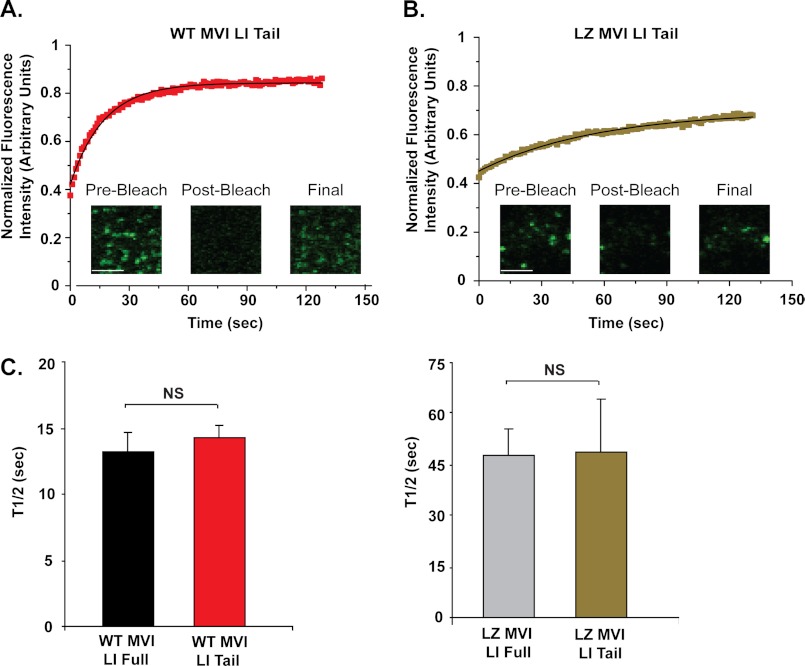FIGURE 4.
Wild type and artificially dimerized myosin VI LI tail constructs turn over at the same rate as their full-length counterparts on clathrin-coated structures. A, FRAP recovery curve for wild type myosin VI LI tail construct. This plot represents an average of 1 data set (8 individual cells). The solid line represents a single exponential fit to the data (R2 = 0.99). Scale bar, 5 μm. B, FRAP of the leucine zipper myosin VI LI tail construct on clathrin-coated structures in HeLa cells. This plot represents an average of 1 data set (11 individual cells). The solid line represents a single exponential fit to the data (R2 = 0.99). Scale bar, 5 μm. C, half-life value for the wild type myosin VI LI tail construct (t½ = 14 ± 1 s), in comparison with full-length, wild type myosin VI LI (t½ = 13 ± 2 s). There is no significant difference between these values (p = 0.6). D, half-life value for the leucine zipper myosin VI LI tail construct (t½ = 49 ± 16 s), in comparison with full-length leucine zipper myosin VI LI (t½ = 48 ± 8 s). There is no significant difference between these values (unpaired t test, n = 4–6 sets of 5–11 cells for each construct; p = 0.9). Error bars represent S.E. NS, no significance.

